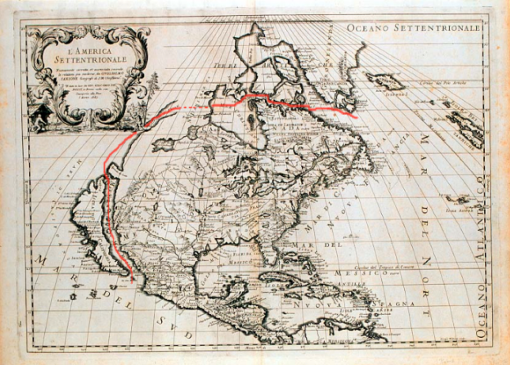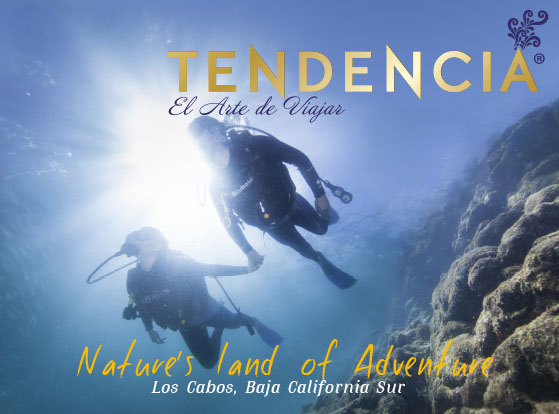Cuando me dijeron que la presente edición
seria sobre el Mar de Cortés lo primero que se me ocurrió decirles fue: ¿y por
dónde empezamos?, la tarea
no es nada fácil. Hablar en un artículo sobre este tema se antoja imposible,
porque habría que remontarse a sus orígenes geológicos y prehistóricos para
poder empezar a entender la riqueza y la belleza de esta zona, y hasta ahí el
tema es hablar de más de 130 millones de años, cuando en el periodo mesozoico
se iniciara la separación de lo que hoy se conoce como la península de Baja
California...
When I was told this issue would be about the Sea ofCortez, my first thought was, “Where do we start?” It is not an easy task. Covering
this topic in a magazine article is almost imposible. To understand the
richness and beauty of this área, we would have to go back to the geological
and prehistoric origins. That would be more than 130 million years ago to the
Mesozoic period when the separation of the peninsula and Baja California began.
Enmarcado por cuatro estados (Baja California, Baja
California Sur, Sonora y Sinaloa) el Mar de Cortés es un sitio muy particular
escogido por la naturaleza, y diseñado a través de los años… muchos años, para
dar vida a una gran cantidad de especies autóctonas de flora y fauna, - en
muchas ocasiones endémicas - y de escenarios naturales que no encuentran rival
en todo el mundo.
Framed by four states (Baja California, Baja CaliforniaSur, Sonora and Sinaloa), the Sea of Cortez is one of nature’s very special
sites. It was designed over the years, many years, to give life to a large
number of native flora and fauna species - often endemic - and natural settings
that are unrivalled worldwide.

Ya hemos hablado en otras ocasiones de las
bellezas del estado de BCS, de su geografía y su gastronomía, del
entretenimiento y de las muchas actividades que se
pueden realizar en tierra. Asimismo hemos comentado de las Islas, bahías y playas; pero en esta
ocasión queremos invitarlo a un recorrido muy especial por el mar, que con
características muy propias ha sido bautizado como el “acuario del mundo” por
el oceanógrafo Jacques Cousteau. Y no es
casualidad que se haya ganado este calificativo. Es que por la temperatura de
sus aguas, su clima, la cantidad de luz solar que recibe, la vegetación marítima y la profundidad del
océano, se crean condiciones perfectas para la procreación de infinidad de
especies que a manera de ejemplo podemos mencionar como el Tiburón Cornuda, el
Tiburón Toro y el Tiburón Leopardo, así como diferentes especies de rayas
(manta rayas). La variedad de especies
de ornato es impresionante y de belleza única, como es el caso del Ídolo Moro,
del cardenal y de la mariposa Guadaña, todos ellos habitantes de las diversas
bahías a lo largo del Mar de Cortes, que totalizan casi 2500 kilómetros de
costas.
We've talked in the past of the beauties of the state of
BCS, its geography, gastronomy, entertainment and the many earthbound activities.
We have also commented on the islands, bays and beaches. But this time, we want
to invite you to a very special journey on the Sea of Cortez which, because of
its unique characteristics, was dubbed the "world's aquarium" by the
oceanographer Jacques Cousteau. It is no accident this body of water has earned
this epithet. It is because the temperature of the water, the weather, the
amount of sunlight it receives, the maritime vegetation and the depth of the
ocean create the perfect conditions for the breeding of countless species. As
examples, we can mention the Horn Shark, the Bull Shark and the Leopard Shark,
as well as various species of rays (manta rays). The variety and beauty of
ornamental species is impressive and unique, such as the Moorish Idol, the
Cardinal and Scythe Butterflyfish, all habitants of the various bays along the
Sea of Cortez. In total, there are almost 2500 miles of coastline.

El Mar de Cortés, también recibe los nombres de Golfo de
California y Mar Bermejo precisamente
por los tonos con los que los atardeceres iluminan sus aguas. En él se
encuentran una gran cantidad de pequeños islotes, hasta la isla más grande que
en extensión supera los 1200 kilómetros cuadrados (Isla Tiburón). A muchas de
ellas se puede llegar en embarcación y en algunas se permite la práctica de
ciertas actividades recreativas, aunque a decir verdad, de todas estas, la simple
exploración y la convivencia con la naturaleza son la mejor experiencia. En muchas de ellas
pareciera que el tiempo se detuvo, no hay sonido alguno como no sea el de las
aves, reptiles y mamíferos, en su hábitat natural, sin que nada ni nadie
lo perturbe.
Debido a que
grandes extensiones de tierra permanecen aun inhabitadas, el espectáculo que
inicia al atardecer y se extiende hasta el amanecer es único. La claridad con
la que se pueden observar las estrellas, los planetas, y el universo goza de un
lugar muy especial en el medio científico, ya que desde hace más de 3 siglos
investigadores y astrónomos de todo el mundo acuden a la península para hacer
observaciones estelares.
The Sea of Cortez is also called the Gulf of
California and Mar Bermejo (Vermillion Sea) precisely because of the colors at
sunset that illuminate the waters. The sea contains a range of small islands with
the largest having an area of 1200 square kilometers (Shark Island). Many of
the islands can be reached by boat and some allow certain recreational
activities. However, the mere exploration and coexistence with nature are the
greatest experiences. On many of the islands, it seems that time has stopped. There
is no sound, just that of birds, reptiles and mammals in their natural habitat,
without anything or anyone to disturb them.
Since large extensions of land remain uninhabited, a
unique show begins at sunset and extends to dawn. The clarity with which you
can see the stars, the planets, and the universe has a special place in the
scientific community. For more than three centuries, researchers and
astronomers from around the world have flocked to the mainland to conduct
stellar observations.
Pero el Golfo de California no solo es mar y tierra,
también es un refugio natural para aves que surcan los cielos de este
territorio. En el abundan aves marinas como la garza azul, pelícanos, gaviotas,
gansos de collar, patos, águilas y gavilanes, pero sobre todo abundan los
zambullidores, pendientes de su comida diaria.
Por supuesto en el Mar de Cortes hay marinas para
albergar todo tipo de embarcaciones y el recorrido en cualquiera que esta sea,
es una experiencia única e irrepetible, aunque también hay una infinidad de
bahías que invitan a fondearse y permanecer admirando el paisaje por horas y
hasta días enteros.
But the Gulf of California is not only sea and land, it
is also a natural refuge for the birds of this territory. The skies are home to
abundant seabirds like blue heron, pelicans, gulls, brant, ducks, eagles and
hawks, but mainly divers abound, looking for their daily meal.
Of course, there are marinas in the Sea of Cortes to
accommodate all types of boats and any other unique form of marine travel.
There is an infinite number of bays that invite you to anchor and stay for
hours or days admiring the scenery.
Con la misma complejidad que 130 millones de
años ayudan a entender la formación del mar de cortés, los indicios en las
pinturas rupestres que muestran la interrelación entre el hombre y la fauna de
la región, incluidos peces y ballenas,
nos habla de la necesidad que tenía el hombre de interactuar con la vida
marina.
Nuestra intención es invitarlo a ser testigo
de las maravillas de Baja California Sur, disfrutarlas, conocer su historia y
convivir con la naturaleza. Pero en
esta ocasión quisiéramos hacerlo de una manera especial para que nos acompañe
en un recorrido mágico, desde la formación y conformación del mar de cortés, de
su flora y fauna, de sus rinconcitos y de cada uno de esos espacios que estamos
seguros le dejaran un recuerdo único.
Just as 130 million years of history help us
to understand the formation of the Sea of Cortez, evidence in local cave
paintings show the relationship between man and the wildlife of the region,
including fish and whales. The paintings speak of man’s need to interact with
marine life.
We invite you to witness the wonders of Baja
California Sur, enjoy, know its history and commune with its nature. But we
want to do it in a special way. Join us on a magical journey, from the creation
and shaping of the Sea of Cortez to its flora and fauna, its nooks and each of
those little spaces that we are sure will provide you with a unique souvenir.
Leer Edición Mar de Cortés / Read Mar De Cortés Edition :
http://bit.ly/ViajandoJesusCorralTraveling







































